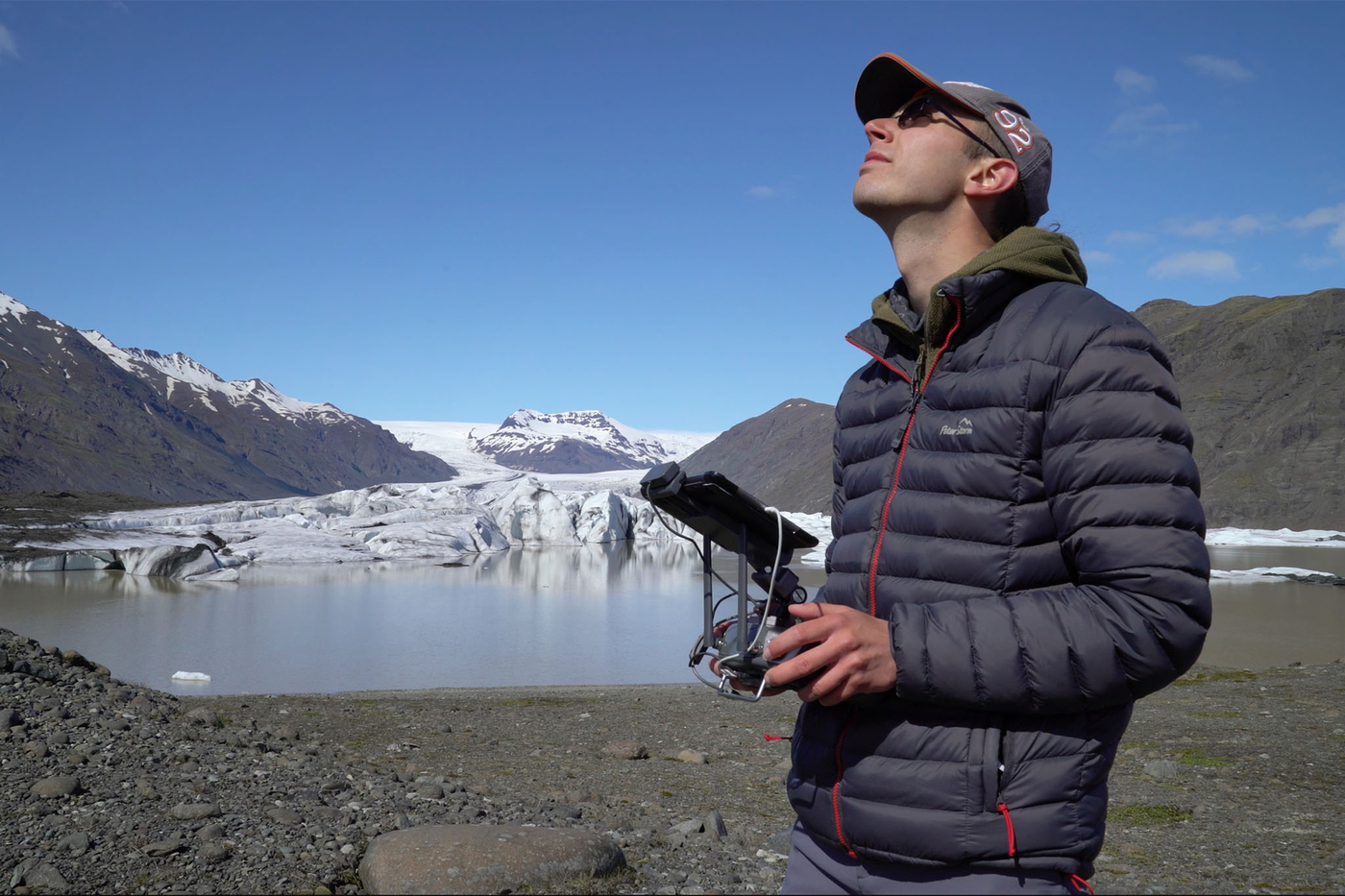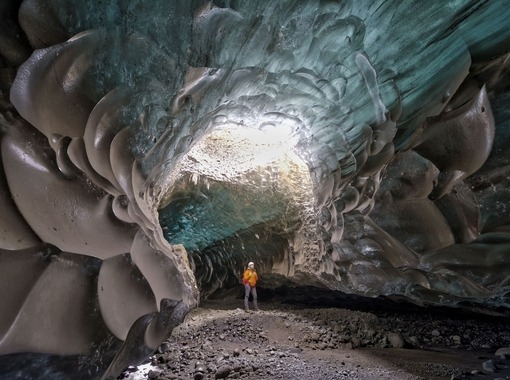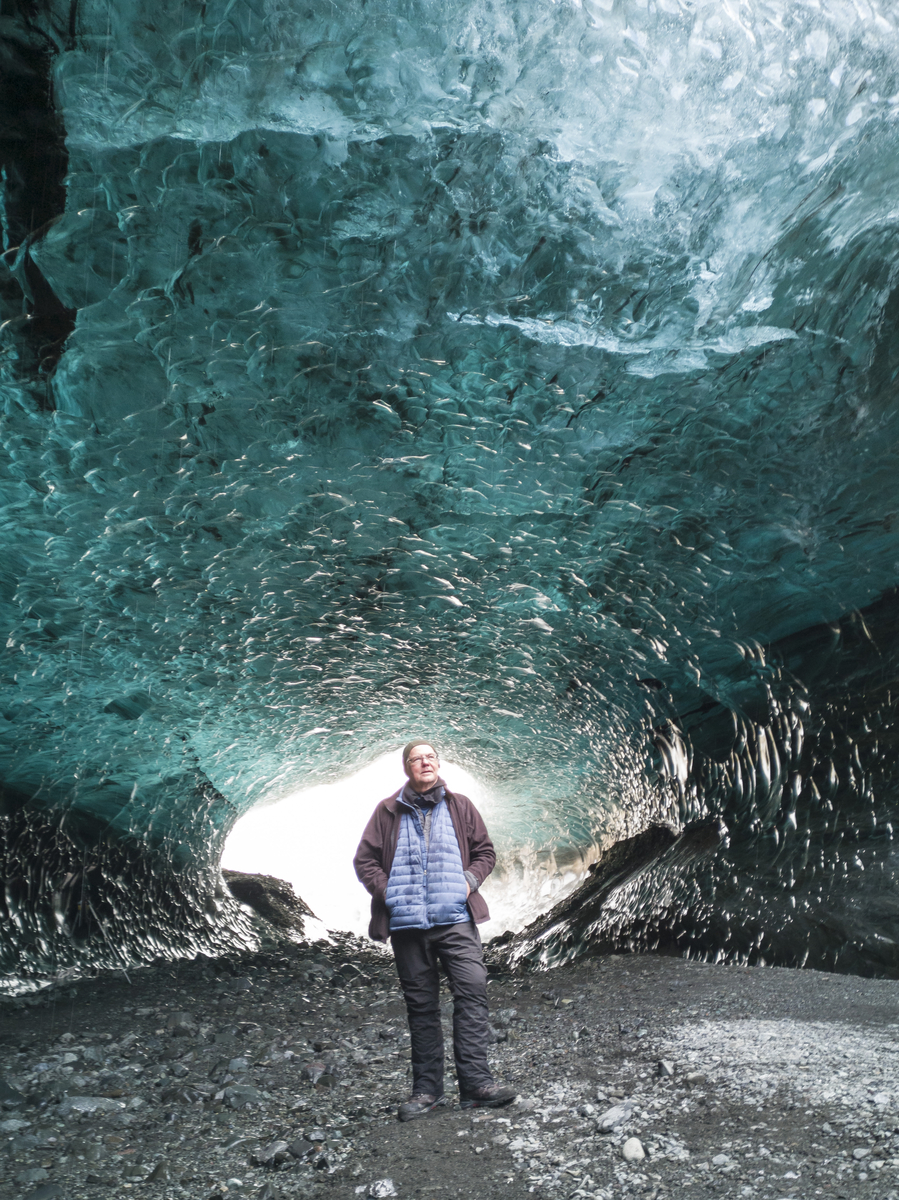How does the beauty of glaciers affect us? Why are we fascinated by them? What would it mean for us as human beings if the glaciers disappear?
The scholar Þorvarður Árnason from the University of Iceland Research Centre in Hornafjörður offers these questions as an explanation of the origins of the film After Ice. Indeed, they tell us more than any long-winded answers about the consequences of the melting of Iceland's glaciers. The film After Ice premiered online on 11 March, a collaboration between Þorvarður and Kieran Baxter, a lecturer in communication design at the University of Dundee in Scotland.
The film addresses the challenges of the UN Sustainable Development Goals, focusing on how climate change is affecting glaciers with the above questions in mind. Þorvarður and Kieran's fascination with visual and digital media was not the only inspiration for the project, because they also share a passion for glaciers and glacial landscapes. The short film also features a poetic narration, composed primarily by M Jackson, the glaciologist, author and two-time Fulbright Scholar at the Research Centre in Hornafjörður.
After Ice from Kieran Baxter on Vimeo.
As a talented photographer, Þorvarður, or Þorri as he is usually called, is used to considering aesthetics alongside the science. He says both are important to this project, which celebrates scientific knowledge and brings Þorri's stunning photography into sharp focus, while Kieran's digital image processing methods make it simple to look back at the history of the glaciers.
Visualisation and recreation
"The film explores this enormous topic, one of the biggest challenges facing humankind: catastrophic climate change. To put it briefly, Kieran and I felt it right to share our expertise on glacial retreat with the public, ideally a global audience, through a medium with which we are both familiar – film. But also in such a way that the visualisations we created were strongly grounded with scientific knowledge of glaciers and their retreat."
"You could say that this project is about finding a way for science and art to work together towards a common goal: clear and effective communication about the reality of catastrophic climate change."
The information used in the film and the research is visual, photographs, film footage and drone images, obtained with specialised technology, i.e. cameras of various kinds.
"There is a technical side to this work," says Kieran, "but I am more interested in the meanings that emerge from different types of images, and how these might be used to communicate the experiences that come from glacial landscapes."

Kieran Baxter shooting with his drone at Heinabergsjökull, one of the glaciers in the documentary. photo/Alice Watterson
Þorri says that these images are also records of how the glaciers looked at that point in time, thereby laying the foundation for continued long-term monitoring of changes.
"In this context, Kieran and I have placed two glaciers under a kind of special observation, because we fear catastrophic recession over the next few years."
Recreating the past
Þorri believes that one of the most remarkable achievements of the film is Kieran's recreation of glaciers in the region as they were in the past. Kieran does this using digital photogrammetry methods that generate 3D models from historic aerial photography.
Kierian, who is also employed part-time as a postdoctoral researcher at the Research Centre in Hornafjörður, says that his research primarily explores how visual media can be used to communicate specialist scientific knowledge to general audiences. "This involves combining knowledge and techniques from the earth sciences with creative media methods which are more often used in film, for example."
Þorri agrees, explaining that the 3D digital landscapes created by Kieran open up a lot of possibilities, for example creating virtual flights following the same route as the real drone, enabling you to cut between the real flight and the virtual flight. "This is a really powerful way to show changes, extremely realistic although it is a virtual environment. It allows us to demonstrate the very dramatic changes to glaciers over the past decades. In my opinion, Kieran's methods represent a significant leap forwards in visual communication of glacial retreat, a leap that could perhaps be compared to the revolutionary time-lapse photography in James Balog's Extreme Ice Survey project over the last decade."
Þorri himself has a strong reputation for his talent in time-lapse photography and contributed several examples to the award-winning science series Fjársjóður framtíðar (Treasure for the Future), which explored a wide range of challenges facing humankind.
Catastrophic climate change threatens cultures and societies
Þorri says that catastrophic climate change threatens not only all life on earth, but also human cultures and societies. "Catastrophic climate change is thus not an environmental problem in the conventional sense. The fight against catastrophic climate change is without question one of the biggest challenges facing humankind, and the most urgent issue for us humans, including scientists. Scientific research into the countless manifestations of catastrophic climate change is essential in our struggle against this problem of unprecedented scale and complexity. It is important that people from as many different disciplines as possible address the issue and that scholars from different backgrounds come together, compare notes and coordinate their efforts. As the situation stands, unfortunately we are a long way off achieving open, comprehensive, interdisciplinary dialogue between most, if not all, subjects, which is what catastrophic climate change calls for. But of course that doesn't mean we should give up – there is far too much at stake."
"The film explores this enormous topic, one of the biggest challenges facing humankind: catastrophic climate change. To put it briefly, Kieran and I felt it right to share our expertise on glacial retreat with the public, ideally a global audience, through a medium with which we are both familiar – film," says Þorri.

Digital media in the name of science
Þorri says that he and Kieran are by no means alone in using a variety of visual and digital media in the name of science. Many people do the same thing, though perhaps without giving the matter much thought.
He argues that maps, photographs and all kinds of graphs and charts are all examples of visual communication commonly used to share research results, with fellow scholars or the public.
"Some artists have taken graphs like these and developed them further, to give the facts additional impact," says Þorri.
"Film can also be an extremely effective medium, not least in an online environment where visual elements dominate. Considering the data that Kieran and I are working with, film is a natural choice of medium to communicate this information. We take the raw materials, i.e. the images themselves, and try to put them together to make a whole, presented in accordance with the poetic conventions of cinematography," says Þorri. "Since drone footage, taken either from the real world or the 3D virtual environment, is the main component of our work, you might say that we are trying to help facts about glacial retreat take flight, making them more accessible to the public and sharing them with people all over the world, in a format that everyone should be able to comprehend even if they have never seen a glacier with their own eyes."
Has been photographing glacial changes for a long time
Þorri says that climate change has long been a kind of side-line for him. "The majority of my research is focused on other subjects, although nature conservation has usually been at the fore. The foundation of my current research into catastrophic climate change was laid during my camping and photography trips around the glacial landscape of Hornafjörður, which began shortly after I started my current job. I discovered that thanks to my proximity to the glaciers and the opportunities I had to observe them regularly, all year round, I was in a position to be a direct eyewitness to the impact of catastrophic climate change. Also that I myself, due to my background in cinematography and photography, could attempt to capture these changes I was witnessing through time-lapse photography – taking images from the same viewpoint at regular intervals."
This was the inspiration behind the Hoffellsjökull series, a series of photographs that Þorri took, one per month, over an eight-year period 2008–2015. Alongside these photography projects, he attempted to understand the significance of it all for himself as a human being, not least a human being inclined to form strong connections with magnificent natural phenomena of various kinds.
Focus on multi or interdisciplinary research
Þorri is director of the University of Iceland Research Centre in Húsavík. In recent years, his research has focused on five main areas. "Climate change is now one of my main priorities, but I am also working on various older, long-term interests, in particular natural landscapes, wild expanses and the ideology behind nature conservation. Tourism also takes some of my attention, including a new project that started last year about the development of science tourism."
Þorvarður's research has generally been multi or interdisciplinary and can be categorised under a new field of study called the environmental humanities.
"The visual is becoming an ever more significant factor in almost everything I'm doing, for example various mapping projects and development work with browsers. If everything goes to plan, my colleagues and I will have the chance to conduct comprehensive, systematic research into the impact of a range of digital media on the effects of catastrophic climate change. That is perhaps my biggest dream project, at the moment."
Þorvarður Árnason was born in Reykjavík in 1960, but now lives in the bosom of the glaciers in Höfn in Hornafjörður. He completed a BS in biology from the University of Iceland in 1985, a BFA in cinematography from Concordia University in 1992 and a PhD in environmental science from Linköping University in 2005.




